This is an image of Europa taken by the Galileo spacecraft in natural and enhanced colors.
Click on image for full size
NASA
Europa
Europa was first discovered by
Galileo in 1610, making it one of the
Galilean Satellites. It is Jupiter's 4th largest moon, 670,900 km from Jupiter. With a diameter that is about half the distance across the United States, 3138 km (1950 miles), Europa is close to the same size as the
Earth's moon (click
here for a comparison between Earth's Moon and Europa).
Europa is named after one of
Jupiter's girlfriends from
Greek mythology. The
Galileo spacecraft discovered that there is the strong possibility that it has an
ocean underneath its icy surface! The last time an ocean was discovered was the Pacific Ocean, 500 years ago. This means Europa is one of the few
moons in the solar system with the possibility of a liquid water environment which could be friendly to
life. The
surface has many interesting features, even though it is mostly made of
ice. Europa also has a very fragile
atmosphere.
You might also be interested in:
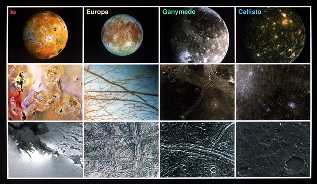
The Galilean satellites are the 4 major moons of Jupiter, Io, Europa, Ganymede, and Callisto. In this picture, Io, and Io’s surface, are shown on the left-most end, then Europa, and its surface, then Ganymede,
...more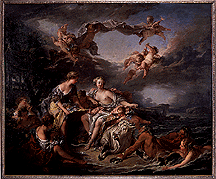
Europa was the beautiful daughter of the king of Tyre, Agenor. Zeus (Jupiter), the King of the gods according to Greek mythology, saw Europa as she was gathering flowers by the sea a nd immediately fell
...more
The Galileo spacecraft was launched on October 19, 1989. Galileo had two parts: an orbiter and a descent probe that parachuted into Jupiter's atmosphere. Galileo's main mission was to explore Jupiter and
...more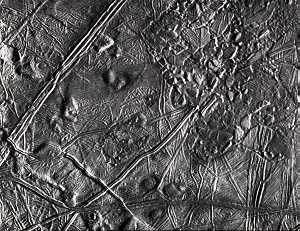
The surface of Europa shows many signs of that there may be an ocean under the surface: * flooded terrain * 'freckles' * rafting * 'mushy' craters, and * spreading centers. Taken together, these pieces
...more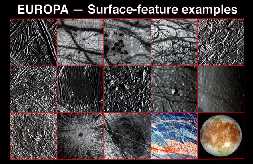
The picture to the left shows examples of the many amazing different surface features of Europa. Many exciting discoveries were made about Europa during the Galileo mission. The surface of Europa is unusual,
...more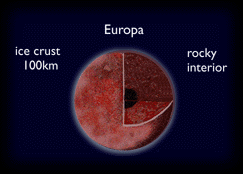
The diagram to the left shows a cutaway of the possible interior structure of Europa. The composition of the icy moons is mostly ice, therefore there is probably a small core of some rocky material buried
...more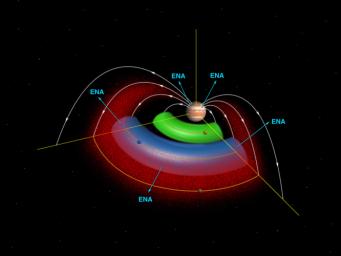
The Galileo mission discovered something amazing! Europa has its own atmosphere, although it is very, very thin. This atmosphere is created when fast moving molecules in Jupiter's magnetosphere hit the
...more















